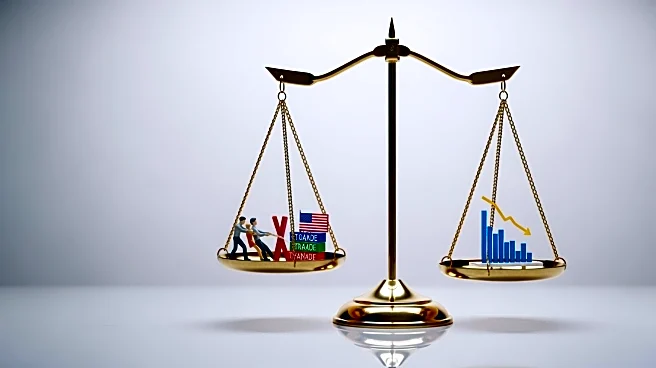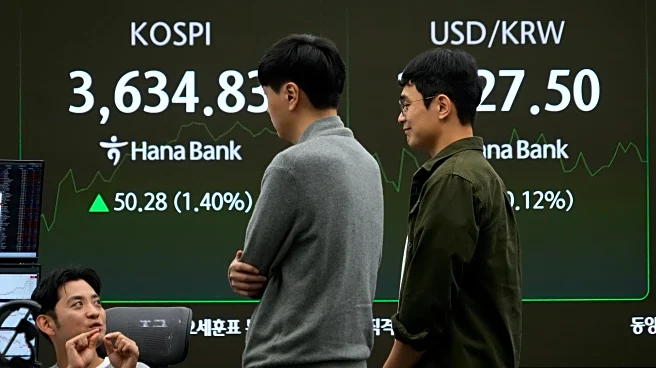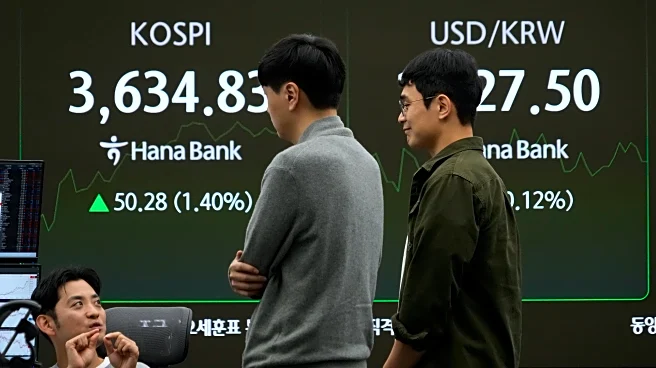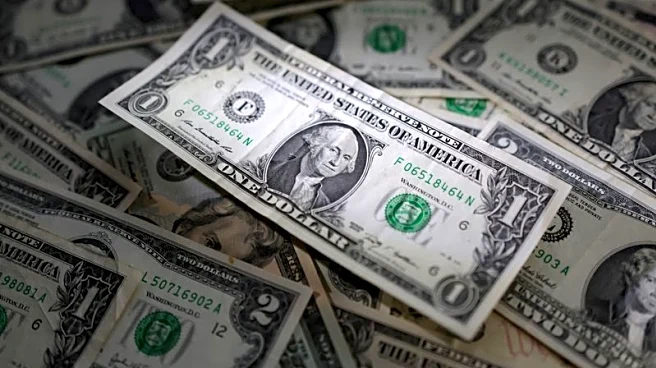What's Happening?
The U.S. dollar has weakened as trade tensions between the U.S. and China continue to affect investor sentiment. The dollar index, which measures the greenback against six other currencies, has declined, with the euro and yen reaching one-week highs.
The trade spat has led to U.S. officials criticizing China's rare earth export controls, which are seen as a threat to global supply chains. Despite the tensions, President Trump is expected to meet Chinese President Xi Jinping in South Korea, with hopes of easing trade measures.
Why It's Important?
The weakening of the U.S. dollar reflects the uncertainty and volatility in global markets due to ongoing trade tensions. Currency fluctuations can impact international trade, investment flows, and economic stability. The trade war between the world's largest economies poses risks to global supply chains and economic growth. The potential meeting between President Trump and President Xi Jinping offers a chance to de-escalate tensions and stabilize markets, but the outcome remains uncertain.
What's Next?
The upcoming meeting between President Trump and President Xi Jinping could lead to adjustments in trade measures, potentially easing tensions and stabilizing currency markets. Investors will be watching for any signs of progress or setbacks in trade negotiations. The U.S. Federal Reserve's interest rate policy will also play a crucial role in influencing currency movements and economic expectations. The ongoing government shutdown adds another layer of uncertainty to the economic outlook.















